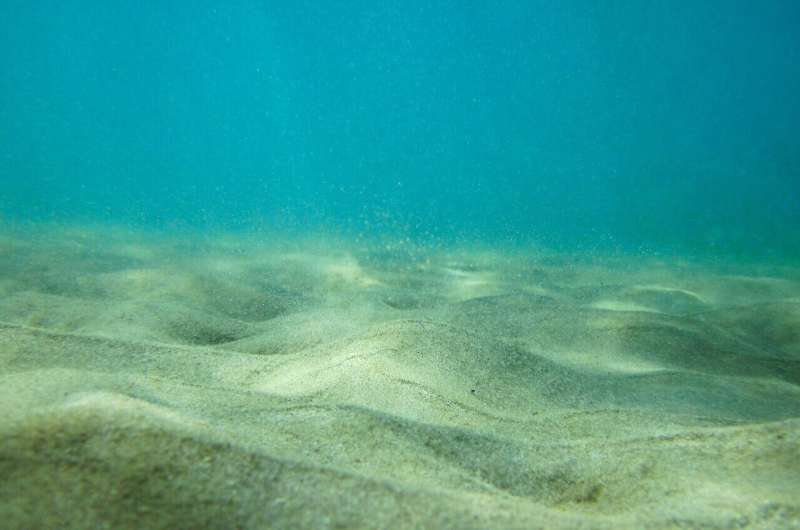Study: Deep-ocean creatures living a 'feast-or-famine' existence because of energy fluxes

Scientists for the first time have tracked how much energy from plants and animals at the surface of the open ocean survives as particles drop to the seafloor more than two miles below, where they say a surprisingly robust ecosystem eagerly awaits.
A new study published this week in Nature Communications documents how little energy survives. Most of it is lost in the upper water column to bacteria, which scour any particulate matter for food. But some diatoms—a particular type of single-celled algae—are sufficiently heavy that they sink like a proverbial rock after they die, reaching the seafloor before bacteria have a chance to leach out all the nutrients and energy.
These dead, but rich, diatoms arrive at the ocean floor with most of their energy supply intact and form a food web that includes tubeworms, small crabs and other small organisms, living in a "feast-or-famine" existence.
"Diatoms represent only about 3% to 5% of the phytoplankton at the surface, but provide most of the energy that makes it to the ocean floor," noted Ricardo Letelier, an Oregon State University marine ecologist and co-author on the study. "These large diatoms have silica shells that make them heavy and allow them to sink before they become depleted.
"Energy can be a funny thing. You can eat a doughnut or a piece of coal, and they both may contain about the same amount of carbon. But you can't get much energy from eating the coal. We usually measure the amount of carbon in organisms, not the amount of energy they provide. This study is one of the first to focus on energy and the results are surprising."
A few years ago, the researchers, who focused their study on the North Pacific Subtropical Gyre, found another aspect that contributes to the "feast-or-famine" existence of organisms at the bottom of the ocean. There is a huge peak in diatom production during the last two weeks of August, creating a sharp spike in food production for that environment.
"You can set your calendar by it—the last couple of weeks in August is diatom season," Letelier said. "The organisms that are two-plus miles below the surface can gorge themselves for a short period of time, and then they have to survive on not very much food for the rest of the year. Luckily, it's a cold-water environment and thus they have a low metabolism, so they probably don't need much."
The study is important because there isn't a complete understanding of how the ocean meets the energy demands for all of the organisms that live there. Phytoplankton production at the surface is a huge source, but there is still uncertainty on how close it comes to supply all the energy needed to support all the life observed in the deep regions of the ocean. Other sources include hydrothermal vents, methane seeps, ethane, and different atmospheric and terrestrial carbon sources.
"We are still very far from being able to achieve full understanding of the level of energy needs and sources," Letelier said.
Journal information: Nature Communications
Provided by Oregon State University



















